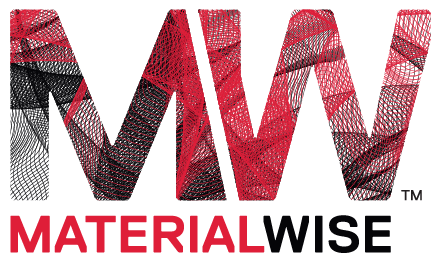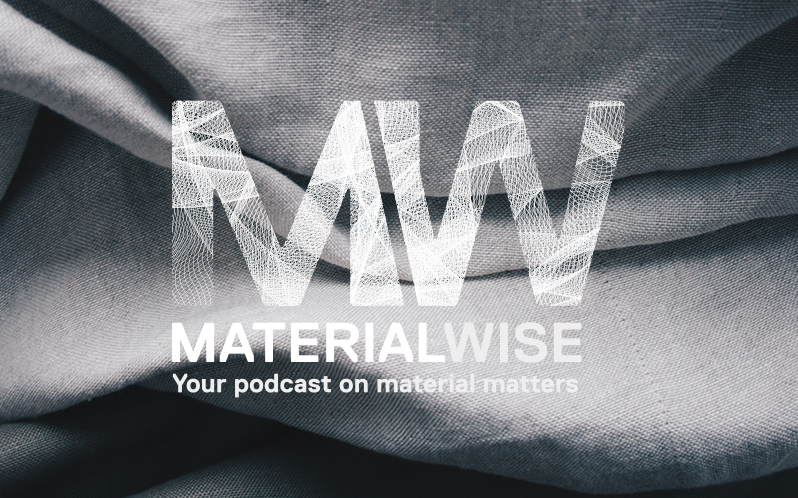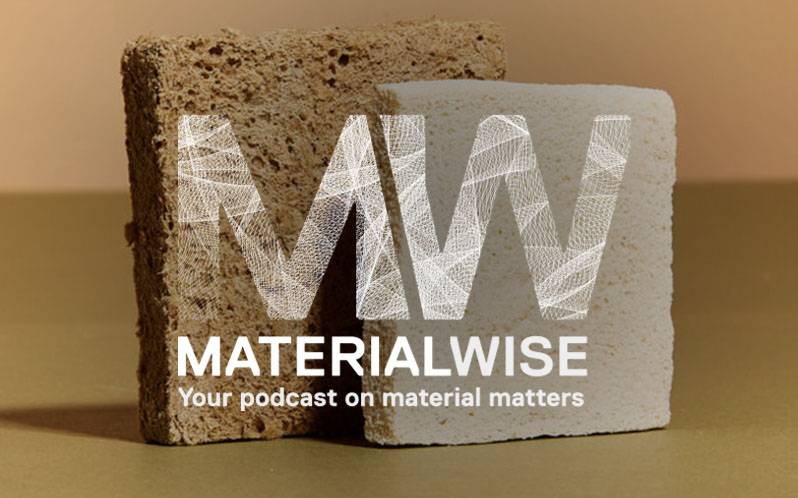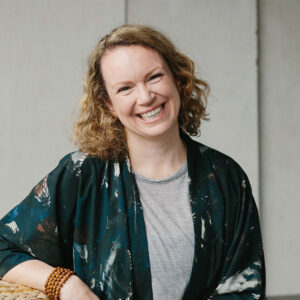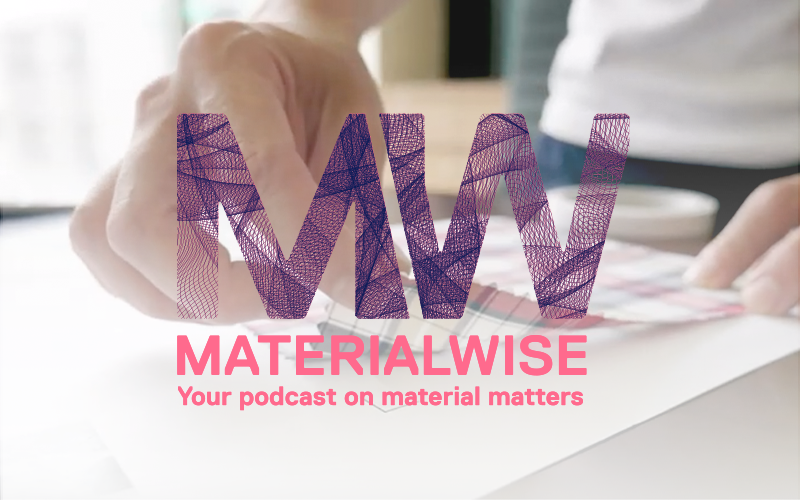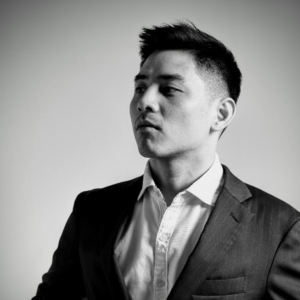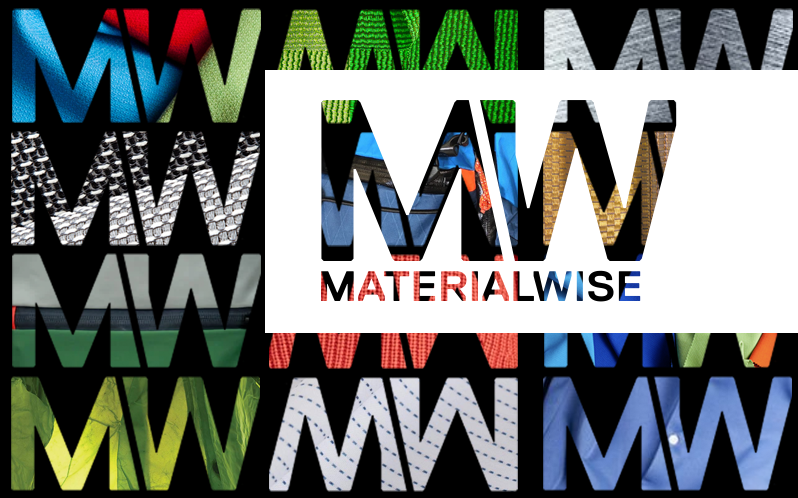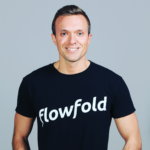Episode 19: Katie Elks and JD Davis | Brooklinen
Katie Elks and JD Davis on how Brooklinen has become so admired.
Brooklinen is the most popular sheet brand on the internet and has received over 80,000 five star consumer reviews for its products. Katie Elks, Director of Design & Product Development, and JD Davis Production, Procurement & Quality Manager of the multi-award-winning luxury bedding & bath brand, share with us why the brand has become so popular, which definitely has a lot to do with the materials that are sourced. We discuss the company’s dedication to quality, responsible manufacturing and transparency – and what consumer trends have shifted during the pandemic.


Katie Elks’ and JD Davis’ Interview Transcript
Nancy: Hello, I’m Nancy Fendler, and you’re listening to Material Wise, your podcast on material matters. It’s my chance to talk to designers, product developers and other guests about what influences them to create, how and why they select the materials they choose, and the relationships they built with their customers and industry.
My guests today are with a multi-award winning luxury bedding and bath brand, Brooklinen. Joining me on the conversation are Katie Elks, Brooklinen and director of design and product development and JD Davis, Brooklinen product, procurement and quality manager.
Brooklinen was co-founded by husband and wife team Vicki and Rich Fulop, who after sleeping on incredibly soft, cool, crisp, and expensive hotel sheets while on vacation, formed the idea of bringing high-end linens at reasonable prices that would appeal to a younger market. Their ideas certainly took off as nearly a decade later, Brooklinen is the most popular Sheet brand on the internet and has received over 80,000 five star consumer reviews for its products. Katie and JD share with us why the brand has become so popular, which definitely has a lot to do with the materials that are sourced. We discussed Brooklinen’s dedication to quality, responsible manufacturing, and transparency, in addition to the consumer trends that have shifted during the pandemic. Finally, Katie and JD share some of their favorite Brooklinen products and other brands they’re following. I hope you enjoy.
So Katie and JD, thanks so much for joining me on Material Wise.
Katie: Thanks for having us.
JD: Thank you.
Nancy: Yeah, I’m really looking forward to it. I’ve been such a fan of Brooklinen and its products and the story. So it’s really fun to be able to chat with you guys. So Katie, I’d just like to know a little bit about you before we get into Brooklinen. So how did you get involved with Brooklinen?
Katie: Sure. So before Brooklinen I always worked in apparel and design and product development, so that’s what I do here. I do the design, color and pattern for all our products.
Nancy: Okay. How about you JD?
JD: Yeah, so I actually came to the Brooklinen team because of a past working relationship with Katie, which is very exciting to be working together again. My background is in supply chain and here I manage all things production, quality, and our suppliers. So essentially everything that goes into mass producing the products that are designed and developed by Katie’s team.
Nancy: So the founders, I’ve read a little bit about, it’s an, a husband and wife team. It’s kind of a romantic story, but I’m just curious why the name Brooklinen?
Katie: So a friend of the founders actually came up with the name by combining our main product category and our home (NYC) borough. So Brooklyn and bed linens became Brooklinen.
Nancy: And I’m wondering if you can tell me why the founders felt as though there was a need for a curated collection of bedding or sleep products, I should say.
Katie: It started with bedding. Rich and Vicki were on vacation at a high-end hotel. And they really loved the sheets that were there. They went to the hotel store to buy them and they were a little over their budget. So after their vacation, they were looking online for a better option and couldn’t really find something and found that other people were also looking for the same thing. So that’s how it all started.
Nancy: So who do you think the customer is? Who is the Brooklinen customer?
Katie: Well, the co-founders were definitely designing product for themselves at first. So they were kind of the first audience and then their friends and family kind of talking to them about what they wanted. And now really our audience is anyone who wants to be comfortable.
Nancy: JD, do you have anything to add?
JD: I’d say overall, our customer is really a broad group of people, of a lot of different backgrounds. And I think that’s something that also draws a lot of us to want to work at Brooklinen is that it appeals to a really large range of people. And like Katie said, Brooklinen appeals to people who want to be comfortable and show me someone who doesn’t want to be comfortable.
Nancy: That’s for sure, particularly this last year. And it also just seems to be very assessable too, because you can buy it online. I know you have some pop-up shops, but to me it has a real friendly demeanor. In some of my research, I noticed that Brooklinen has three core values. The first of them is quality. Maybe JD, I could ask you for, since you are in more of the sourcing and materials, is how the materials come into play with quality?
JD: I can answer on the quality end of this, as far as upholding the quality standards that we have for our customers. There’s a lot of checkpoints and us working really closely with our vendors to make sure that the quality standards are something that we ourselves would want to sleep on and look forward to sleeping on. As far as the sourcing of the fabric itself and the exact fabrics that are chosen, I would actually send that over to Katie to kind of speak to that from the sourcing side of the product.
Nancy: Okay, Great. Thanks. So Katie, what’s important to you when you select a fabric?
Katie: So durability is definitely one of the things we think about, but also everything has to be super soft. We want people to pull it out of their box and be really excited to use it. So it’s kind of finding that perfect spot between something that’s long-lasting and really soft. And then whenever we’re adding something new to the collection, we really want to make sure it’s additive. And it’s not just like a different version of something we have. So our classic percale, our Lux sateen, and our washed linen are all very different in terms of hand feel. And what kind of customer would gravitate to each of those.
Nancy: When it comes to sourcing, where do you turn to find your materials?
Katie: So all our vendors are really experts in the kinds of products they make. So it’s talking to them about what new innovations are happening or something that we’ve seen, whether it be in a store or online, or just any kind of new idea, they’re our biggest partners in development to help us execute on something. And then we also do attend trade shows, not in the past year, but hopefully we can go back to that because obviously a big part of it to go and see so many vendors at once and be able to touch and feel is really important.
Nancy: Oh, I know. That touch and feel. There’s probably been a lot of shipping of fabrics back and forth for you to experience and feel. Do you think consumers have become savvier about the materials that they are purchasing?
Katie: I absolutely think that they have, even before the pandemic, from the product side, but also on the marketing side, we really make sure that our customers understand that quality is key and that we’re looking out for them as far as putting out product that is the best quality that we can deliver and quality we want to sleep on ourselves. Even now that we are in the pandemic, we’re all spending time at home that we never ever have before. And I’d say this before, and I’m saying this now is like, everyone is paying way more attention to what’s in our homes. What’s around us all the time, especially our soft textiles. I think probably everyone around is looking at what we have, wanting to upgrade or think about it a different way, laundering things more often. It’s really been an interesting experience, at least personally, for me to see how that’s changed with myself. And I think that customers now are paying even more attention to what they have around them. Specifically, natural fibers are really, really popular with us and something that consumers just really respond to even more so now.
Nancy: So the second value was responsible manufacturing. So just to talk a little bit about, on that point, what is your sustainability platform? And also just what sustainability means to you?
JD: Yeah. I’d say responsible manufacturing, sustainable manufacturing. This is definitely, I think specifically for me, something that is front and center. It’s sustainability of the products, how we produce products, but also how we produce products, wanting at the end of the day to be making products that last is super important for us and that our customers can get all of the use out of the products that we can really honor the raw materials and the processes that go into making it. But as we start to look deeper in our supply chain, now that we are on the tail end of a global supply chain disruption, we can really reinvigorate the sustainability focuses across everything, whether it’s materials, factory processes, freight shipping packaging, the last mile, shipping to the customer. As we scale, we’re finding more and more exciting ways to have a positive impact on the environment and something that we can holistically look at and make sure that these are the right things to do for our customer at the end of the day as well.
Nancy: There’s so many things that go into sustainability. And I was just talking to my 16 year old last night and talking about materials and how much savvier they’ve become with the items that they’re purchasing and how they’re packaged and whether it’s apparel, or a CD, or whatever. So I think you’re right. I think it’s a very exciting time. So much innovation has come out of the sustainability movement and particularly in materials. Katie, where do you find your design inspiration, including color scheme?
Katie: Yeah. We always seem to start with color when we’re concepting a new collection. It’s definitely one of my favorite aspects of textiles, is how they take color. We follow kind of what’s going on in fashion or different home trends. Our original collection, or a lot of our core products have more of like a men’s wear inspiration. So we definitely always try to keep in mind, our full range of customers. A lot of bedding companies really steer more towards like floral and shiny. I think we do a really nice job of full breadth of colors and patterns for anyone to choose from. We also work with print designers that are outside of Brooklinen and they all have their own different approach to color and pattern. So they bring a lot of inspiration and ideas for new collections.
Nancy: You mentioned drawing from men’s wear, and I can see that, but just begs me to ask if you see more men buying bedding than women or an increased number of men buying bedding?
Katie: Yeah. I would say our customer split is about 50% men, 50% women when traditionally it’s for bedding and home goods. It’s more female identifying group that make the most of the customer base. So it’s interesting to see that our product really, or our assortment really does have something for everyone.
Nancy: Yeah. It’s interesting. I’m glad. Glad to hear it. So are there important design principles that you and your team follow? I mean, you mentioned quality, durability, just curious if you see any other trends coming that hit you, that, oh, I’ve got to have this, or I got to do this?
Katie: Yeah. We always want to have some patterns that feel of the moment or are exciting, but it also comes down to, we want people to have this product for years to come. So kind of finding that line of, okay, what’s exciting, but isn’t going to feel dated or out done in a year. So you can continue to use the product.
Nancy: Do you have any thoughts where betting trends might be headed?
Katie: Yeah. From our vendors we’ve seen a lot of health and wellness trends and different finishes and applications and all kinds of things they’re putting into yarns. CBD infused yarns is a big one that we’ve seen. Haven’t tested that ourselves yet, but also we still haven’t addressed a lot of soft goods for the home. So for us, it’s still about exploring more decorative soft items, or rugs, or anything along those lines that could compliment what would be the adding to that market.
Nancy: You mentioned health and wellness, and I think that was sort of the third value. And I mean, health and wellness has certainly been a trend across everything this past year. I mean, previously pre pandemic, but more than anything this year. The term self-care. I keep hearing that word a lot too. It seems like there might be some cross market trends between, like, I think you’ve mentioned, sort of performance features that you might find, such as anti-microbial or a cool touch or whatever. And then bringing those performance features into home bedding or home textiles, I should say. Do you see this happening?
Katie: Yeah. I think definitely the like active wear community and people that develop those products, a lot of those technologies I think would have great adaptations into home. There’s a lot of things that help for active wear. So you don’t have to wash it as often. I’m a little hesitant to tell people to not wash their sheets as often, but if it helps keep things fresher between washing, I think it could be a great add.
Nancy: We’re hopefully coming out of the pandemic. It certainly feels it where I live in Maine. And hopefully where you are in New York. Have you seen a big shift in your business as a result of the pandemic? JD, you mentioned people really caring about comfort and their purchases. So I’m just curious if you’ve seen any interesting purchasing trends.
JD: Yeah, absolutely. Like I said before, we’re all spending more time in our homes where like looking at, oh, maybe my sheets seen better days, that sort of thing. We’re actually seeing a lot of first-time customers, coming to us for sheets. That’s what we’re known for. Brooklinen, come to us for sheets, but they’re actually returning to expand into the rest of their home. I’d say specifically, I’m really excited about our bath categories that we have, the towels that we offer. For me, that was my second Brooklinen product that I bought and really found these took my bathroom to the whole next level. And we’re seeing our customers, go through this experience specifically during the pandemic as well. People just coming back to us sooner and for more items, whether that be throws, towels, our silk products. Because as you mentioned, we do have a very broad assortment and can really get people excited about breathing more life into their space.
Nancy: So I just want to ask you some fun questions that might be a little bit more personal. And so let’s start with you, Katie. What’s your favorite material or what are your favorite materials?
Katie: I love cotton. So are classic cotton percale is my favorite fabric. It’s our original product too.
Nancy: How about you JD?
JD: I really love our towels. Honestly, I really love our towels, our super plush towels are most classic, super popular. I really love them in the marled colorway that we have. So that’s a black and white cross. Kind of gives it a little bit of depth, but I just, I use them every day and I absolutely love those.
Nancy: Good tip. I have to take a look at those. Nothing like a good towel that’s for sure. We’ll just go back and forth. So Katie, what’s your favorite Brooklinen item and why?
Katie: My favorite item is the silk pillowcase. So even before joining Brooklinen I had silk pillowcases from other brands and I like ours so much more. It’s just a heavier weight. It washes a lot better. And when we were traveling more, I would always bring it with me because it packs down so small. And then it’s kind of this nice little piece of home wherever you’re going.
Nancy: Yeah. And is it true that it makes your hair less frizzy? Not that you have frizzy hair. By seeing you on Zoom, that is.
Katie: I can have yeah, second and third day hair very easily. It’s soft on my skin as well. So if I put on a lot of moisturizer at night, especially in the winter right now, it stays on my face rather than soaking into a cotton pillowcase.
Nancy: How about you JD?
JD: Yeah, I really love basics. And the comforter collection that we have specifically, our down comforters. I absolutely love. I have both our lightweight and our all season for different times of year and for any guests that might stay. And just really love the quality for the price that we can offer our customers. And now working on the product is really exciting as well, because this is one, similar to Katie, that I owned before joining the team.
Nancy: Oh wow. That’s cool. So Katie, besides your own brand and your own products, what brands do you love? Who do you think, does a really good job with their brand?
Katie: Yeah, two brands that I really like that I’m kind of looking at, I think industries or a type of customer that haven’t been as widely addressed as most companies have, but FIGS for their scrubs. I think every doctor, and nurse, and medical professional appreciates their update to that very old category. And then Universal Standard, I think is a great one for having a broad size range and really making it accessible to anyone that wants to have their product.
Nancy: How about you JD?
JD: Very fitting for the pandemic, I really liked the exercise wear brand Girlfriend Collective. They’ve recently launched into more apparel products, but I really liked their sustainability stance in industry with a lot of synthetics. And in synthetics, it can tend to be a big drain on the environment as far as resources go. So I really enjoy what they put out. And I wouldn’t be alone in saying that the technical fabric developments at UNIQLO are really appealing as well. So I would have to say UNIQLO.
Nancy: Both good ones too. So Katie, if you were not a designer, product developer, what profession would you have chosen?
Katie: I think I would be in the teaching field either for something in the arts or for science.
Nancy: How about you JD?
JD: Well, I don’t think I could get too far from calendars, and planning, and all the conducting that comes along with production management. So I’d say probably project management, which is pretty close. So it might be a little bit of a cop out, but production is where I’ll stay because that international element is pretty critical for me.
Nancy: So here’s a big question and I only know one person who does this, but Katie, do you iron your sheets?
Katie: No, I do try to get them on the bed while they’re still warm from the dryer to help reduce the wrinkling, but definitely do not iron any of my sheets.
Nancy: How about you JD?
JD: Absolutely not. I do not iron my sheets. With cats on the bed and crazy schedule, I opt for a lived in look.
Nancy: I don’t feel so bad now. Okay. It’s been a really long, hard year and I’m sure we’ve all had some silver linings as well as some difficulty, but once the pandemic is over, what are you looking most forward to? How about you, Katie?
Katie: I think I’m looking forward to traveling. Obviously like most people, I had some travel plans in 2020 that got canceled. So I’m hoping to travel around and visit family and connect with people.
Nancy: How about you JD?
JD: Mine is also travel. One of my favorite things about what I do is visiting our suppliers and really being able to see everything about making our product in the facilities in which, is spending most of its time before it comes to us. And so I’d have to say visiting our suppliers is the absolutely the thing I’m looking most forward to. It really brings a lot of joy to the day to day, but also really great teaching moments for myself and within my team.
Nancy: Me too. I’m just looking forward to being in the same room, the same conference with a bunch of people and learning. And it’s amazing what Zoom and the technology can do to bring us together. But there’s nothing quite like really being there in person with someone. Katie and JD, thanks so much for joining me on Material Wise. It was great to see you, with you.
Katie: Thank you.
JD: Thank you.
Links to organizations mentioned in podcast:
- For more information on Brooklinen please visit https://www.brooklinen.com/
